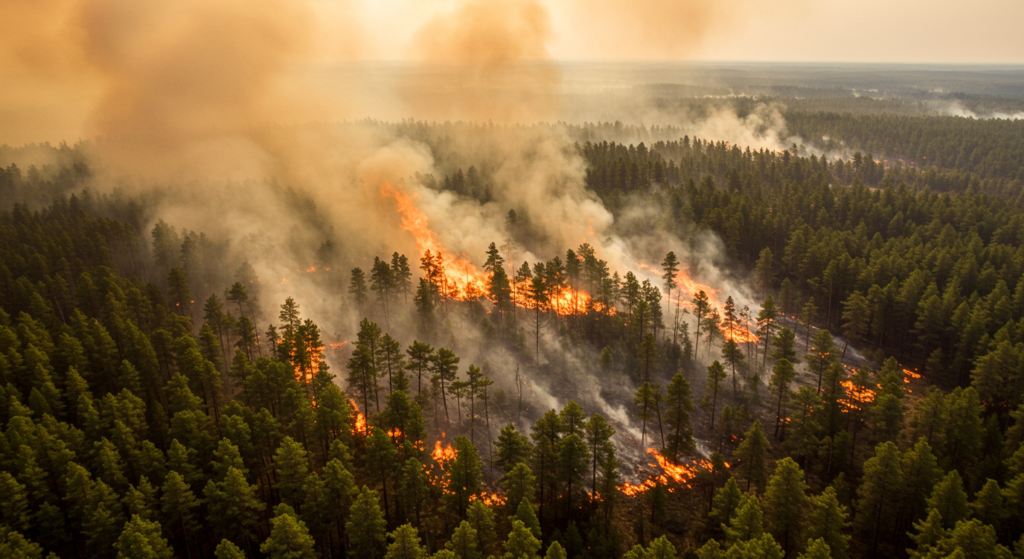
Southern California’s January 2025 fires have left communities reeling, with devastating losses and widespread destruction. From Ventura to Oxnard and beyond, these blazes spread with shocking speed, consuming over 50,000 acres of land and forcing thousands to evacuate. While wildfires are not uncommon in California, the perfect storm of conditions that ignited and fueled these fires has made them a sobering reminder of the region’s vulnerability.
How Did the Fires Start?
The fires’ origins lie in a mix of natural and human-induced factors, exacerbated by environmental conditions that created a tinderbox-like scenario.
- Initial Sparks:
Investigations suggest that faulty power lines, sparked equipment, or even human negligence may have ignited the initial flames. For instance, unmaintained power infrastructure near the Santa Clara River is believed to have caused a spark that escalated into the catastrophic Ventura County fires. - Weather Conditions:
In January 2025, Southern California experienced an unusual combination of record-low rainfall, dry vegetation, and fierce Santa Ana winds. These conditions created the perfect environment for fires to ignite and spread rapidly. - Human Activity:
Fires can also be unintentionally started by everyday human activity, such as improperly discarded cigarettes, campfires left unattended. In heavily populated areas like Oxnard and Ventura, the risk of accidental ignition is higher due to urban encroachment into fire-prone wildlands.
Why Did the Fires Spread So Quickly?
Several factors contributed to the rapid spread and sheer intensity of the fires:
- Santa Ana Winds:
These dry, powerful winds, notorious for fanning wildfires in Southern California, played a major role. Blowing from inland deserts toward the coast, Santa Ana winds can reach speeds of up to 70 mph. These winds:- Fuel the flames: By carrying embers over long distances, igniting new fires miles away.
- Dry the air further: Lower humidity levels, turning vegetation into highly flammable material.
- Accelerate spread: Push flames rapidly across the landscape, outpacing firefighting efforts.
- Dry Vegetation:
After months of little to no rainfall, the vegetation in Southern California was parched and primed to burn. Grasses, shrubs, and chaparral—the region’s dominant plant types—acted as fuel for the fires. The longer the drought, the more flammable the landscape becomes. - Topography:
The hills and canyons of Southern California, such as those near Ventura and the Santa Clara River, create natural funnels that direct and intensify wind currents. Fires move faster uphill due to the preheating of vegetation, making mountainous regions especially vulnerable. - Urban-Wildland Interface:
As communities expand into fire-prone areas, the line between natural landscapes and residential neighborhoods blurs. Fires that start in wildlands can quickly move into populated areas, as seen in Ventura and Oxnard, where homes and businesses became engulfed in flames within hours.

Also Read: What Is a Hurricane? Everything You Need to Know.
Areas Affected by the Fires
The fires have devastated several key regions:
- Ventura County:
One of the hardest-hit areas, with fires spreading along the Santa Clara River corridor. The county has reported thousands of evacuations, dozens of structures destroyed, and significant environmental damage. - Oxnard:
Fires in Oxnard rapidly consumed residential areas, forcing immediate evacuations. The city’s close proximity to Ventura County made it a vulnerable target, with winds carrying embers across neighbourhoods. - Santa Clara River Area:
Fires in this region were especially destructive, burning thousands of acres of open land and threatening nearby towns. The Santa Clara River, often a natural barrier, could not stop the flames due to the extreme dryness of its surrounding vegetation.
A Broader Perspective on Fire Severity
Wildfires in California are becoming increasingly severe, driven by the following long-term trends:
- Climate Change:
Rising temperatures and prolonged droughts are creating ideal conditions for wildfires. According to climate scientists, California’s fire season is now nearly year-round, with January no longer offering a reprieve from the threat of flames. - Increased Fuel Loads:
Decades of fire suppression have allowed vegetation to accumulate unnaturally, creating more fuel for wildfires. While controlled burns can help manage this issue, they are underutilized due to logistical and regulatory challenges. - Population Growth:
As more people move into fire-prone areas, the risk of ignition increases, as does the potential for property damage and loss of life.
Human and Environmental Toll
The human cost of these fires is immense. Thousands of families have been displaced, with some losing their homes entirely. Communities like Ventura and Oxnard are grappling with the loss of schools, businesses, and critical infrastructure.
The environmental toll is equally staggering. Wildlife habitats have been destroyed, and air quality across Southern California has plummeted due to smoke and ash. Experts warn that recovery for both people and the environment will take years.
Lessons for the Future
As devastating as these fires are, they also highlight the need for better prevention and preparedness:
- Improved Infrastructure: Upgrading power lines and utilities to prevent sparks during high-risk weather.
- Better Land Management: Implementing controlled burns and removing excess vegetation to reduce fuel loads.
- Community Education: Teaching residents about fire safety, evacuation plans, and defensible space around their homes.
A Message of Resilience
Despite the devastation, the response to these fires has shown the resilience of Southern Californians. Firefighters, volunteers, and neighbours have come together to protect lives and support one another during this crisis. As Ventura County resident Sarah Martinez said, “We’ve lost a lot, but we’re still standing. And together, we’ll rebuild.”